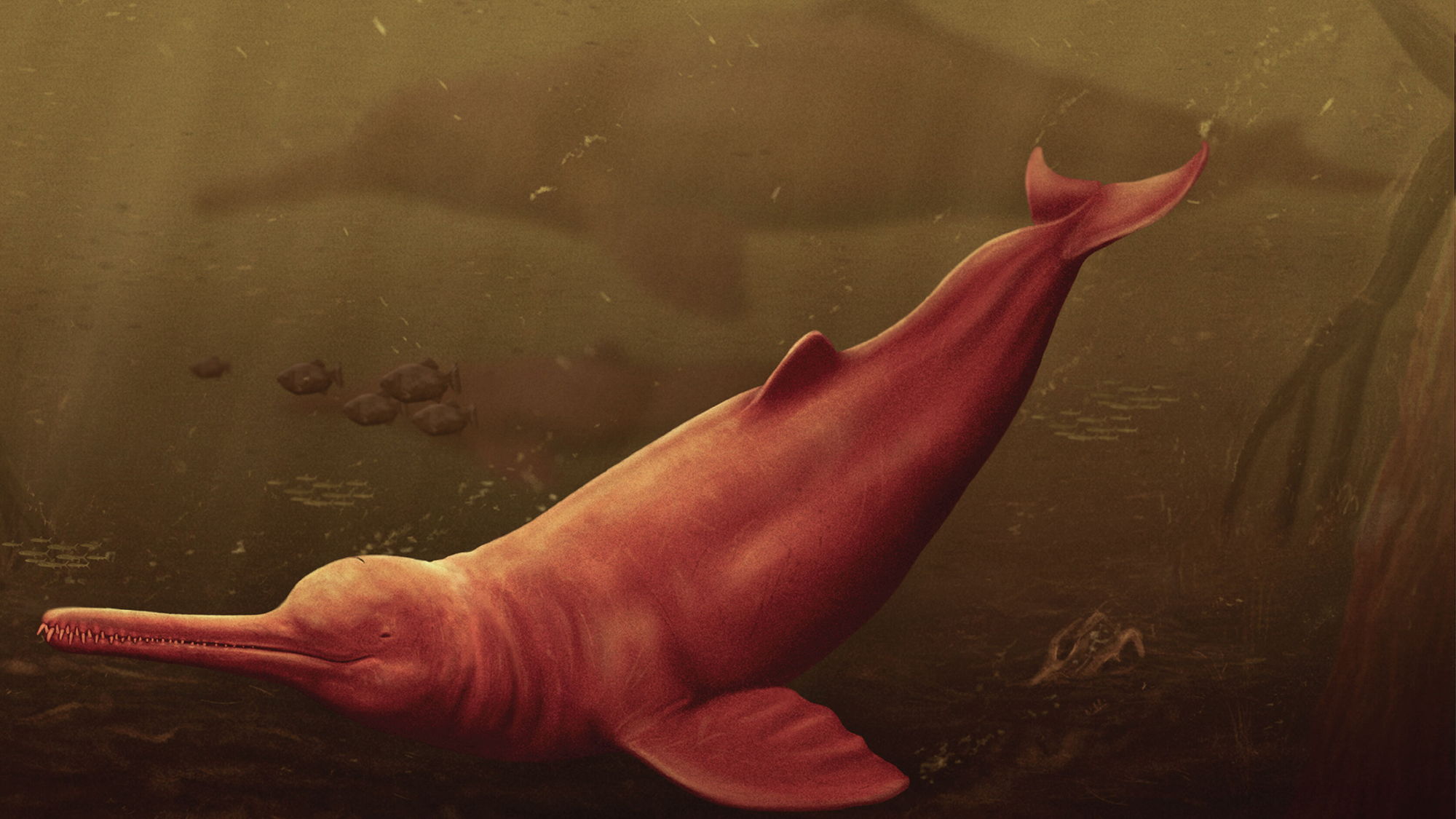

Not all dolphins live in the salty ocean. While rare, some river dolphins live and eat in freshwater and are best known for their candy colored hues. Now, paleontologists have uncovered a fossilized skull belonging to a 16-million-year-old extinct river dolphin species in Peru named Pebanista yacuruna. It could grow to about 10 to 11 feet long and is the largest known species of river dolphin known to science. Pebanista is described in a study published March 20 in the journal Science Advances.
The name Pebanista yacuruna is inspired by the Yacuruna, a mythical aquatic people that legends say inhabit underwater cities in the Amazon basin and are similar to the god Neptune in Greek mythology. The fossilized skull was found in the Peruvian Amazon and belongs to the group Platanistoidea. This group was a common animal in the Earth’s ocean between 24 and 16 million years ago. The team believes that their primarily salt water dwelling ancestors invaded the prey-rich freshwater ecosystems of the early Amazon and learned to adapt to this new environment.
“Sixteen million years ago, the Peruvian Amazonia looked very different from what it is today,” Aldo Benites-Palomino, a study co-author and paleontologist at the University of Zurich in Switzerland, said in a statement. “Much of the Amazonian plain was covered by a large system of lakes and swamps called Pebas.”
[Related: Eavesdropping on pink river dolphins could help save them.]
This landscape stretched across present day Colombia, Ecuador, Bolivia, Peru, and Brazil and included a variety of ecosystems in its lakes and swamps. About 10 million years ago, the Pebas system began to give way to the floodplain that Amazonia looks like today. Pebanista’s prey began to disappear as the landscape began to change, driving these giant dolphins to extinction. With Pebanista out of the picture, the relatives of today’s Amazon river dolphins called Inia had an opportunity to sneak in.
While these pink dolphins may look similar to the extinct Pebanista, they are not directly related. Pebanista’s closest living relatives of this newly discovered species are actually found in South Asia.
“We discovered that its size is not the only remarkable aspect,” says Benites-Palomino. “With this fossil record unearthed in the Amazon, we expected to find close relatives of the living Amazon River dolphin–but instead the closest cousins of Pebanista are the South Asian river dolphins (genus Platanista).”
Both Pebanista and Platanista have highly developed facial crests that help them with echolocation. That is when they emit high-frequency sounds and listen to their echoes in order to “see” their prey through sounds.
“For river dolphins, echolocation, or biosonar, is even more critical as the waters they inhabit are extremely muddy, which impedes their vision,” study co-author and University of Zurich paleontologist Gabriel Aguirre-Fernández said in a statement.
[Related: This dolphin ancestor looked like a cross between Flipper and Moby Dick.]
Pebanista’s elongated snout with many teeth suggests that it fed on fish the way other river dolphins do. Modern Amazon river dolphins called boto are considered critically endangered and their primary threats include habitat loss and degradation and getting entangled in fishing gear.
The Amazon rainforest remains a very difficult place for paleontological fieldwork. Fossils like these are only accessible during the dry season, when water levels drop low enough to expose ancient layers of bedrock. If the fossils are not collected in time, they can be swept away during the rainy season.
The specimen was found in 2018 in an expedition led by Peruvian paleontologist Rodolfo Salas-Gismondi, who completed his postdoctoral work at the University of Zurich. The team traveled more than 180 miles of the Napo River in northeastern Peru and collected dozens of other fossils. The dolphin skull is now housed at the Museo de Historia Natural in Lima.
